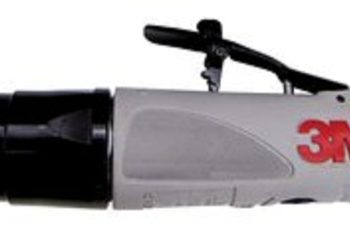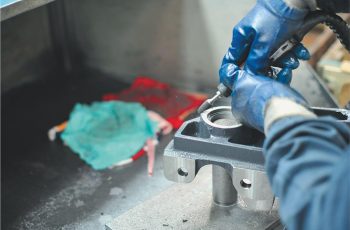When you’re working on automotive repair and restoration, variable speed die grinders are invaluable tools. They offer the precision and versatility needed for tasks like surface restoration and rust removal. With adjustable speeds, these grinders adapt to different materials and tasks, improving workflow and project quality. But what makes them truly indispensable, and how do you choose the right one for your needs? There’s more to uncover about their impact on efficiency and project outcomes.
Key Takeaways
- Variable speed die grinders enhance precision and control, crucial for surface restoration and rust removal in automotive repair.
- Their adjustable speed ranges from 6,500 to 35,000 RPM, allowing tailored approaches to different materials and tasks.
- Ergonomic designs reduce user fatigue and improve access to tight spaces, essential for prolonged automotive work.
- These tools streamline workflows by minimizing tool changes and supporting diverse grinding, polishing, and shaping tasks.
- Proper maintenance and safety practices ensure tool longevity and operator safety in automotive restoration projects.
Overview of Variable Speed Die Grinders
Variable speed die grinders are versatile tools that greatly enhance precision and control in automotive repair tasks. You’re able to fine-tune the tool’s speed from 6,500 to 30,000 RPM, allowing you to adapt to different grinding techniques easily. Whether you’re removing heavy material or performing delicate polishing, the ability to swiftly adjust speed via dials, triggers, or paddle switches is essential. It’s important to remember that these tools can sometimes be hard to find on websites, and encountering a 404 Not Found error can indicate the page for a specific model is unavailable. When selecting your tool, consider the task at hand—whether it’s grinding, deburring, or rust removal, the right grinder makes all the difference. Brushless motors offer efficiency and longevity, while ergonomic designs reduce fatigue. Safety features like no-lock paddle switches and thermal management systems guarantee both user protection and tool durability, making your automotive repair tasks more efficient and safer.
Types of Variable Speed Die Grinders for Automotive Use
When choosing between pneumatic and cordless variable speed die grinders for automotive use, you’ll want to evaluate the trade-offs in power and portability. While pneumatic grinders offer consistent power and are lightweight, cordless models provide the freedom to move without being tethered to an air compressor. Ergonomic designs in both types help reduce user fatigue, making them comfortable for extended repairs or precision tasks. Die grinders are versatile tools capable of handling multiple tasks, such as grinding, polishing, and shaping, making them an essential tool in automotive repair and restoration.
Pneumatic vs. Cordless Grinders
While both pneumatic and cordless die grinders serve essential roles in automotive repair, each type has unique advantages depending on your needs. Pneumatic advantages include delivering higher power output and sustaining heavy-duty operation without overheating, making them ideal for industrial tasks. They maintain consistent motor speed and torque with a continuous air supply. However, they require an air compressor and hoses, which might limit your mobility. On the other hand, cordless grinders offer unmatched mobility and convenience, free from hoses or compressors. They’re perfect for quick jobs in remote locations but come with cordless limitations like moderate power and shorter runtime due to battery life. In challenging environments, pneumatic tools excel because they have a stalling mechanism that prevents burnout, offering reliability even in extreme conditions. Ultimately, choosing between them depends on whether power or portability is your priority.
Ergonomic Design Benefits
Choosing the right die grinder for automotive repair often involves considering not just power and portability but also ergonomic design. Ergonomic benefits are essential, especially during long sessions. Design innovations like flexible shaft models reduce weight at the tool-tip, minimizing hand and wrist strain. Lightweight handpieces improve accessibility in tight spaces typical in automotive work. Soft-grip handles enhance comfort, reducing hand fatigue over prolonged use. Variable flow-through ventilation systems maintain a comfortable grip temperature, preventing overheating. Compact form factors promote better control and decrease operator fatigue during detailed tasks. These ergonomic features guarantee that your work is not just efficient but also comfortable, allowing you to focus on precision without the distraction of physical discomfort. Additionally, tools like Foredom, with their adjustable speeds, offer customizable performance tailored to specific materials and tasks, which further enhances their ergonomic advantages.
Key Features and Functionality
When you’re choosing a variable speed die grinder for automotive repair, RPM range versatility is essential, allowing you to match the tool’s speed to different materials and tasks effectively. You’ll also appreciate ergonomic designs that reduce fatigue, especially during long projects in tight spaces. Additionally, having a variety of collet compatibility options guarantees you can use a wide range of attachments, enhancing the tool’s versatility in your repair work.
RPM Range Versatility
Though often overlooked, the RPM range versatility of variable speed die grinders plays a crucial role in automotive repair. By mastering RPM adjustment techniques, you can achieve precision material removal, adapting to the specific needs of each task. With RPM ranges typically spanning from 8,000 to 35,000, these grinders offer flexibility for everything from delicate shaping to heavy material removal. For instance, professional models like the Milwaukee M18 FUEL provide tailored control with five settings between 8,000 and 20,000 RPM. The ability to adjust speeds guarantees prime performance, whether you’re grinding, polishing, or cutting. Lower RPMs improve control, reducing bit chatter, while higher speeds enable quick stock removal. This adaptability minimizes damage risks and enhances overall task efficiency.
Ergonomic Design Benefits
As you explore the versatility of RPM ranges in variable speed die grinders, it’s equally important to contemplate the ergonomic design benefits that enhance usability and comfort during automotive repairs. Ergonomic advantages are evident in features like the flexible shaft design, which separates the motor from the handpiece, reducing fatigue by minimizing weight in your hand. Lightweight handpieces and ergonomic grips with soft materials guarantee user comfort, allowing precise work without strain. Flow-through ventilation systems keep overheating at bay, while cordless options with balanced weight distribution provide freedom of movement. Enhanced control is achieved through ergonomic designs promoting natural hand positioning and reduced vibration, supporting precision handling. Anti-slip grips and safety switches further improve user comfort and safety, even in challenging conditions.
Collet Compatibility Options
Exploring collet compatibility options, you’ll find that they’re vital for maximizing the functionality of variable speed die grinders in automotive repair. Different collet types, like 1/8″, 6mm, and 1/4″, allow you to use a wide array of bits, enhancing the tool’s versatility. By choosing grinders that accept both 6mm and 6.35mm collets, you gain flexibility for various accessory shanks. Ensuring bit stability, collet systems securely hold grinding, cutting, and polishing tools, even at high speeds between 7,000 and 35,000 RPM. Properly fitting collets prevent slippage, essential for precision and safety. Interchangeable collet nuts and wrenches make maintenance easy, while dual collet options expand your ability to tackle multiple automotive repair and restoration tasks efficiently.
Applications in Automotive Repair and Restoration
When it comes to automotive repair and restoration, die grinders are indispensable tools due to their versatility and efficiency. You’re able to use them for surface restoration techniques like removing rust and corrosion from metal surfaces, stripping paint, and smoothing weld seams. This guarantees your car’s structure is sound and ready for a fresh coat of paint. Metal shaping methods become straightforward as you cut and form body panels, remove dents, and refine contours for custom work. With these grinders, you can also enhance engine performance by porting and polishing intake and exhaust components. Their precision detailing capabilities allow you to polish, engrave, and deburring, guaranteeing a professional finish. Die grinders truly handle a wide range of automotive tasks.
Advantages of Variable Speed Control
Although die grinders are already versatile tools, incorporating variable speed control greatly enhances their utility in automotive repair. You’ll benefit from precision control, allowing you to fine-tune speeds for specific materials and tasks, like polishing aluminum without damage. This minimizes mistakes and maintains the integrity of intricate parts during restoration. Operational efficiency improves as you easily switch between cutting, grinding, and polishing with the right speed adjustments.
Ergonomic designs reduce fatigue, with adjustable speeds easing your workload by reducing wrist and hand strain. The versatility of these tools shines with multi-speed settings, suitable for various materials from metal to wood. By using ideal speeds, you extend tool longevity, reduce overheating, and enhance safety through better control, minimizing accidents and damage.
Maintenance and Safety Considerations
Maintaining variable speed die grinders is essential for guaranteeing their performance and safety in automotive repair. Implement regular maintenance practices like cleaning the tool after each use, lubricating moving parts, and inspecting collets and attachments. Check air hoses for leaks to maintain power consistency. Safety features are vital; always use built-in safety switches and wear PPE, including eye protection and gloves. Maintain a firm grip and use ergonomic handles to reduce fatigue. Ascertain your workspace is well-ventilated and inspect the grinder’s ventilation system regularly to prevent overheating. Disconnect power before maintenance to avoid accidental starts. By adhering to these practices, you’ll prolong your tool’s life and maintain safe operation during automotive repair and restoration tasks.
Impact on Repair and Restoration Efficiency
Thanks to enhanced speed control and versatility, variable speed die grinders greatly boost repair and restoration efficiency in automotive settings. By adjusting speeds between 7,000 and 35,000 RPM, you can tailor the tool to specific tasks, whether it’s heavy-duty grinding or delicate polishing. This optimization streamlines repair workflows by reducing the need for multiple tools and minimizing changeover delays. Additionally, these grinders support a range of restoration techniques, from rust removal to intricate detailing, improving the quality of your work. Versatile accessory compatibility further enhances their adaptability, allowing you to tackle diverse projects without frequent tool swaps. Ultimately, these efficiency gains lead to faster project turnaround and higher customer satisfaction, making variable speed die grinders invaluable in automotive repair.
Choosing the Right Die Grinder for Your Needs
Variable speed die grinders have proven their worth in enhancing repair efficiency, but selecting the right tool for your specific needs is key to maximizing these benefits. First, consider die grinder types: corded electric for consistent power, cordless for mobility, and pneumatic for high torque. Evaluate speed settings, typically between 20,000 to 35,000 RPM, to handle both delicate and heavy work. Straight die grinders excel in tight spaces, while right angle and 115-degree models offer versatility for varied access angles. Confirm collet compatibility with your preferred bits for tasks like polishing and grinding. Don’t overlook ergonomics—lighter models reduce fatigue. Brushless motors and extended shaft options increase durability and reach, making them essential for long-term automotive restoration.
Conclusion
In automotive repair and restoration, you’ll find variable speed die grinders indispensable. These versatile tools, with their adjustable speeds and ergonomic design, allow you to tackle tasks like rust removal and weld smoothing with precision. By understanding their features and applications, you can enhance your workflow efficiency and project quality. Always prioritize maintenance and safety, and choose a grinder that suits your specific needs. With the right tool, you’ll achieve excellent results in your automotive projects.

